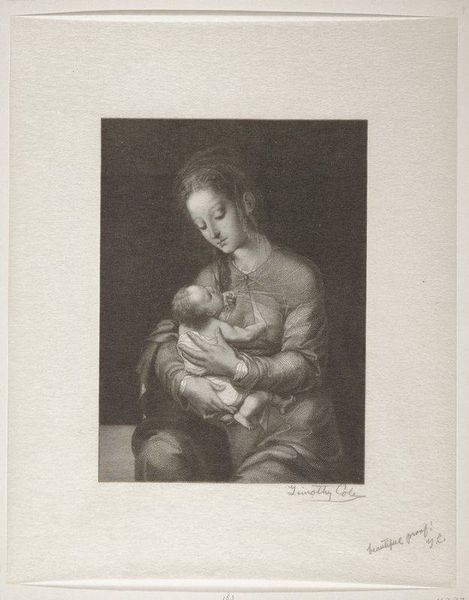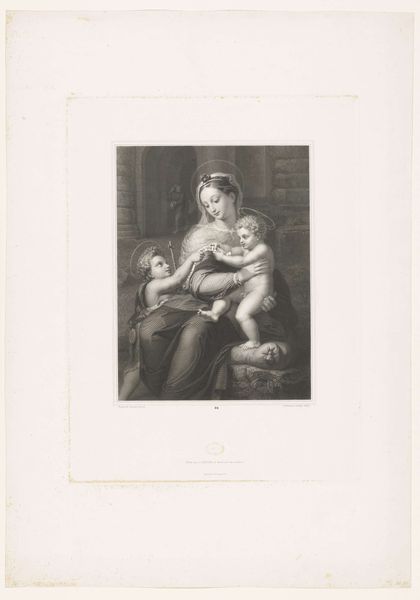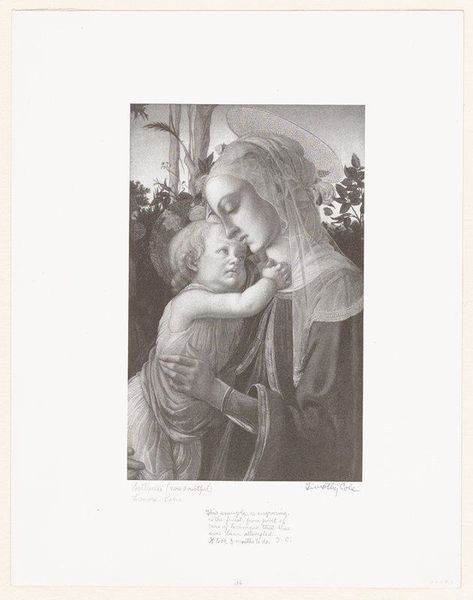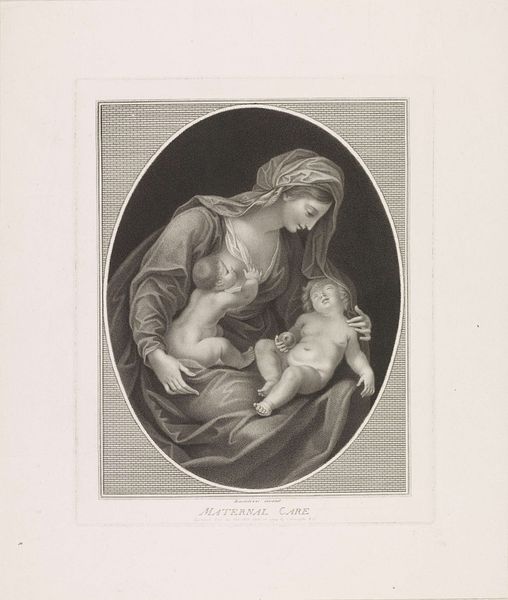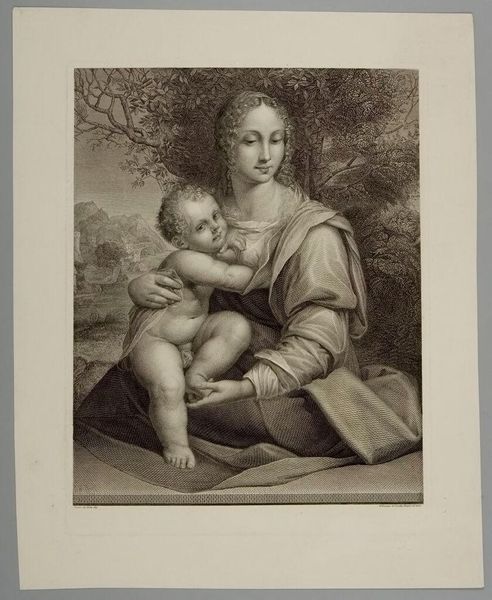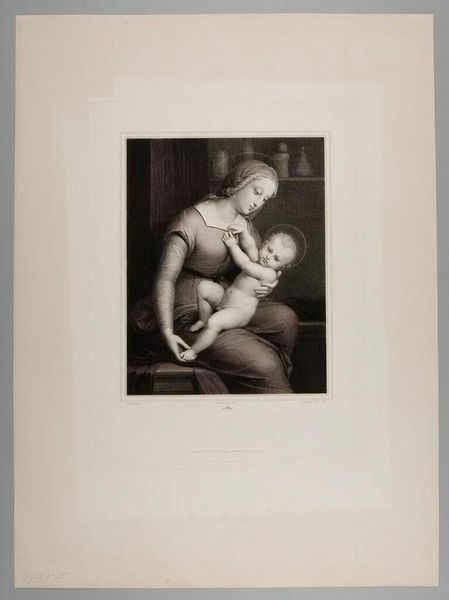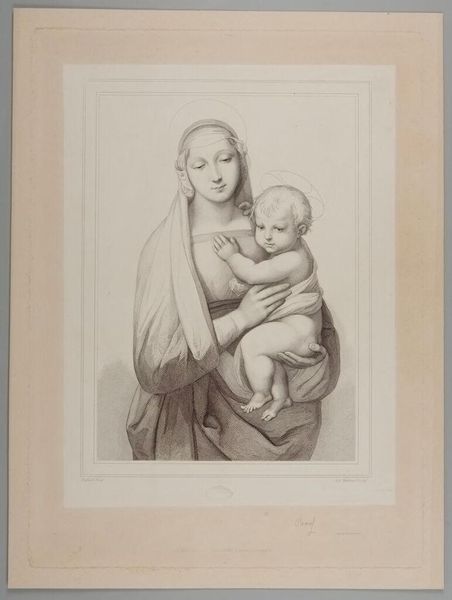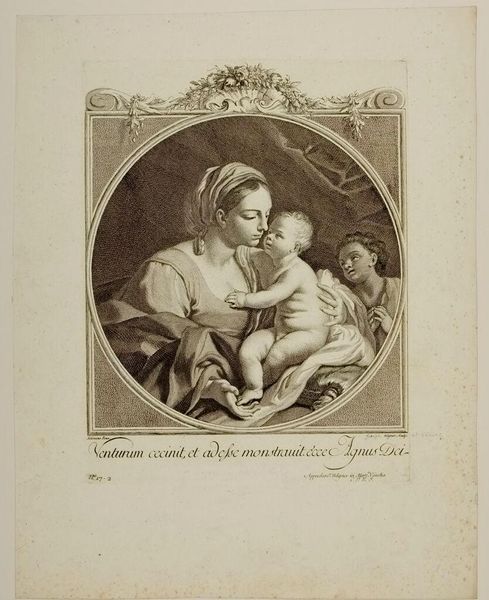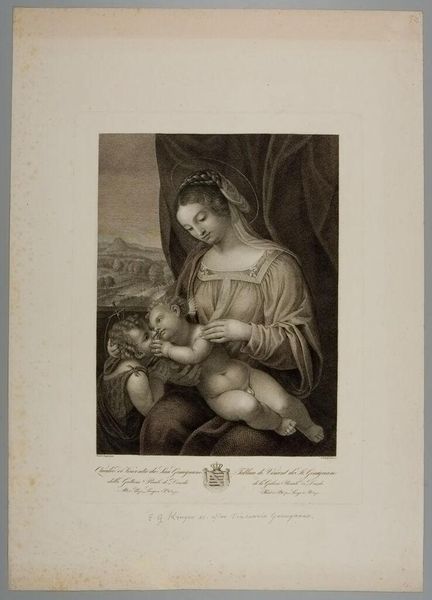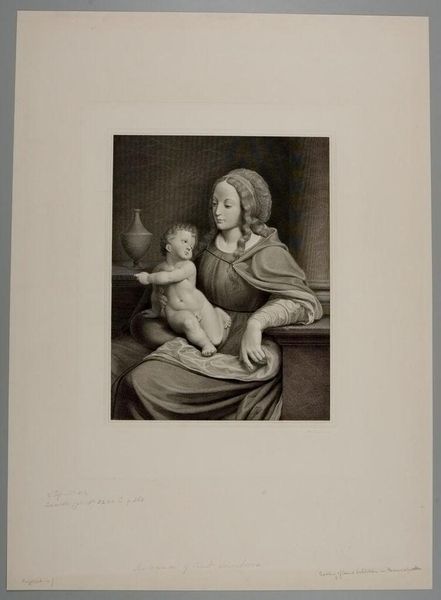
print, woodcut, wood-engraving
#
portrait
# print
#
figuration
#
11_renaissance
#
woodcut
#
history-painting
#
wood-engraving
#
miniature
Dimensions: 7 5/16 x 5 in. (18.57 x 12.7 cm) (image)11 9/16 x 9 1/4 in. (29.37 x 23.5 cm) (sheet)
Copyright: No Copyright - United States
Timothy Cole created this wood engraving, "The Virgin Adoring Infant," sometime around the turn of the 20th century. As an engraver, Cole was less concerned with original creations and more with reproducing artworks in print form. In this image, Cole is reinterpreting a Renaissance painting of the Madonna and Child. During Cole's lifetime, photography was becoming increasingly popular and gradually replacing engraving as the dominant method of image reproduction. However, photography was not considered an art, in part because it was thought to be too mechanical and impersonal. Wood engravings, like this one, were championed for their artisanal, human qualities. When we view this image, we should think about how institutions such as museums and art academies helped to construct hierarchies of artistic media. By examining sources from the period such as art magazines, exhibition catalogs, and personal papers of artists, we can gain a richer understanding of the debates that shaped our modern conception of "art."
Comments
No comments
Be the first to comment and join the conversation on the ultimate creative platform.
